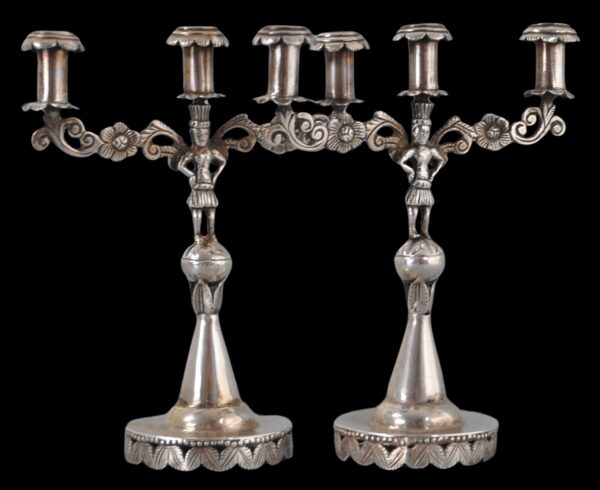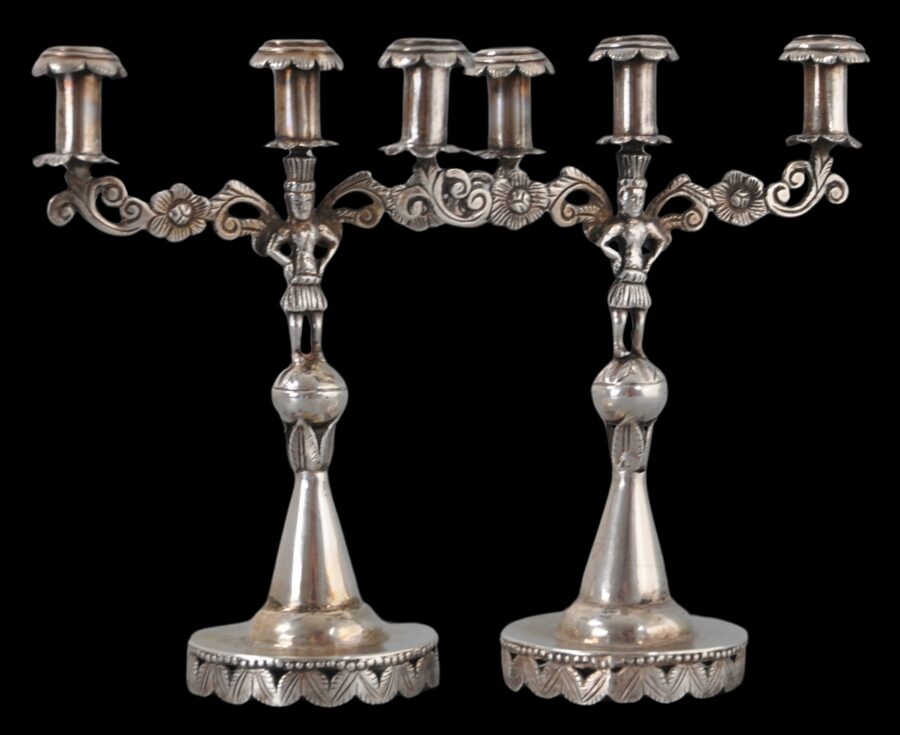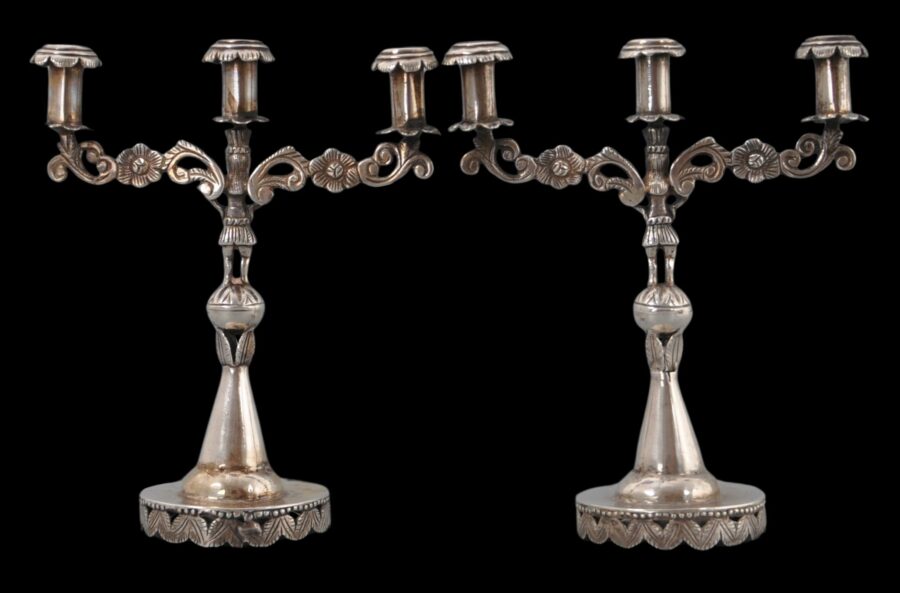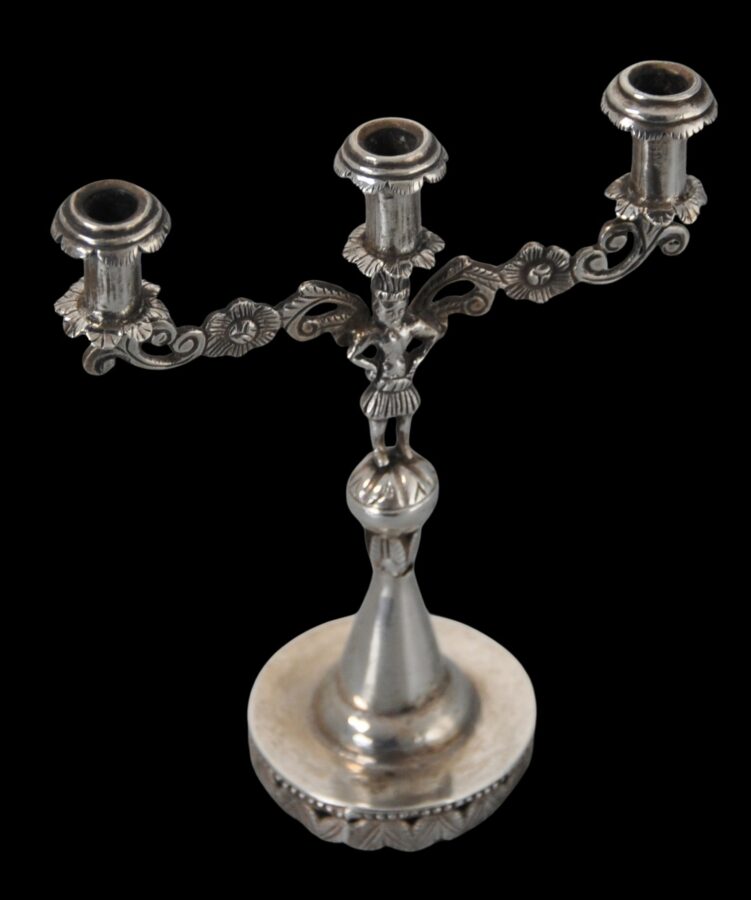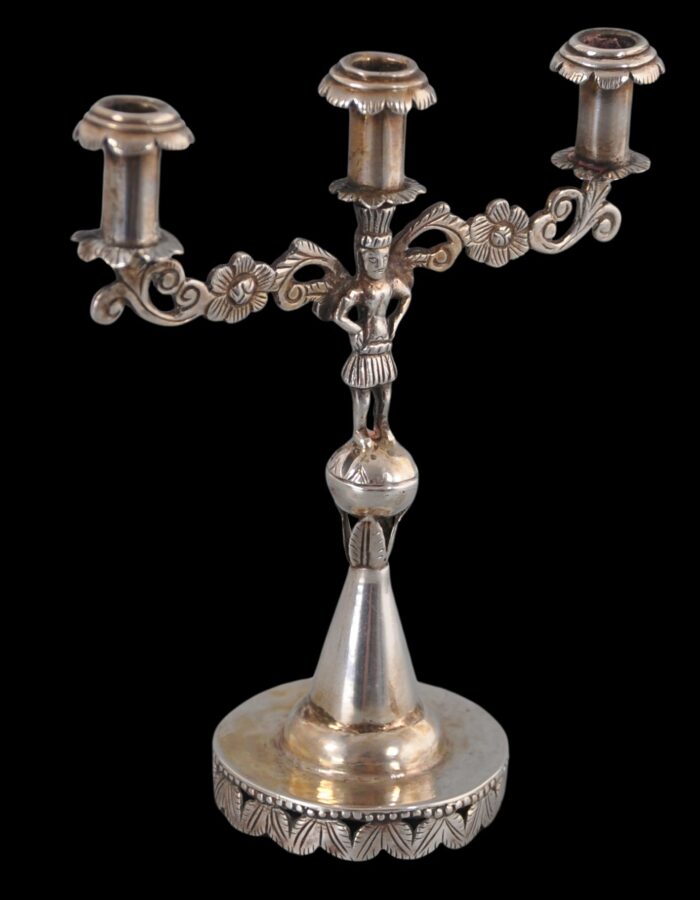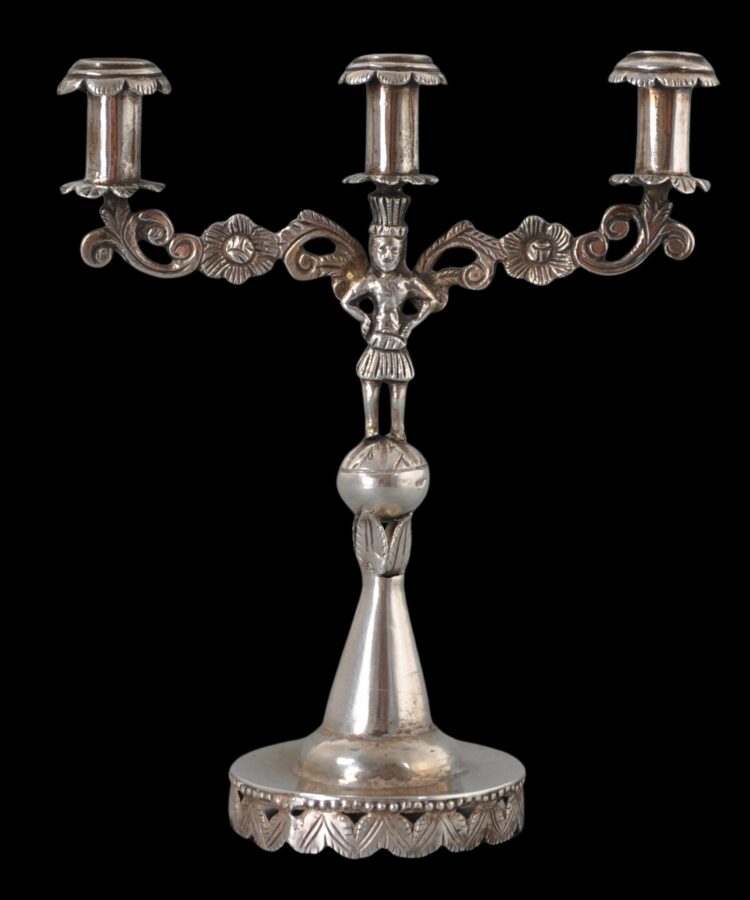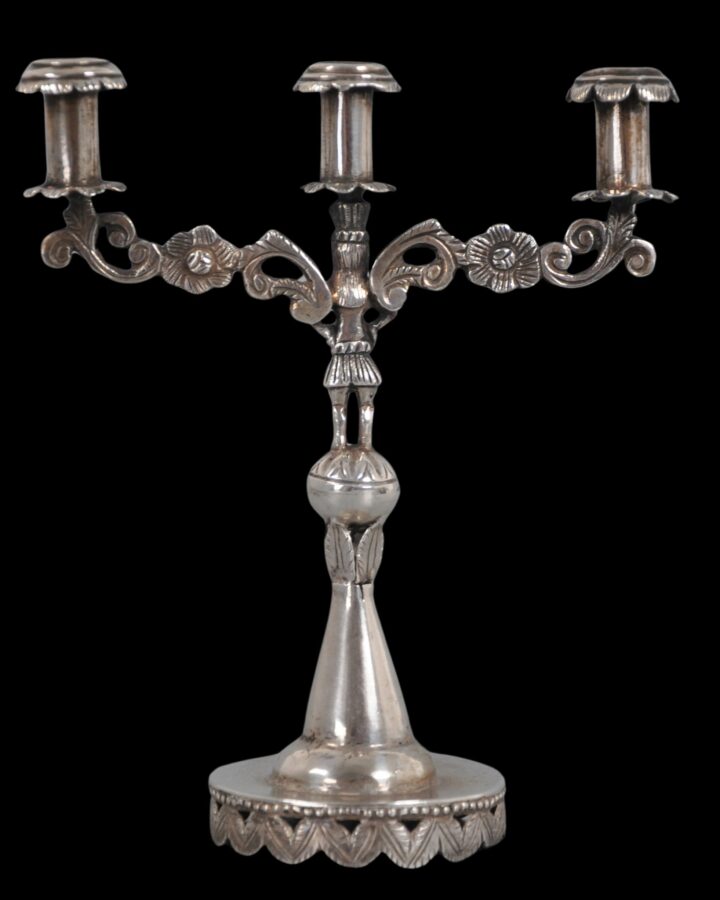This diminutive, elegant pair of silver candlesticks each of which would have held thin tapers most likely was designed for a private altar or a dressing table.
Of silver, each shows traces of gilding. Each comprises a circular, pierced foot, a conical stem and then a sphere on which a native figure stands with a feathered headdress and with hands on hips. From the figure’s shoulders and headdress rise leafy and floral branches that hold three cups in which the tapers were inserted.
There are no maker’s or assay marks but larger candlesticks of similar form have been attributed to Argentina, Peru and Bolivia. The precise origins cannot be specified but the broad attribution of the Viceroyalty of Peru.
The Viceroyalty of Peru was a Spanish imperial provincial administrative district, created in 1542, that originally contained what is today Peru and most of Spain’s other colonial holdings in South America. Lima was the Viceroyalty of Peru’s capital. Stately homes were built in Lima by the local Spanish aristocracy and their splendid interiors were decorated with grand items of Spanish-influenced furniture. This helped to make Lima the most Spanish city in all of South America. Buildings, both secular and ecclesiastic, were based on 17th century European classicism. Silver mined from the Potosi mines – among the most important silver mines the world has seen – funded much of this and was used locally too by local silversmiths. The shipping port of Seville connected Spain to Viceroyalty of Peru and to Manila and Mexico. The trade was known as the Galleon Trade which saw the distribution of luxury goods across the world. The flow was not one way, but complex and multi-dimensional. The Viceroyalty of Peru lasted until 1824, although over its history it went through various territorial changes.
The pair sit without rocking and are in excellent condition.
References
Argent d’Argentine, Association Francaise d’Action Artistique, 1992.
Davis Boylan, L., Spanish Colonial Silver, Museum of New Mexico Press, 1974.
de Lavalle, J.A. & W. Lang, Arte y Tesoros del Peru: Plateria Virreynal, Banco de Credito del Peru en la Cultura, 1974.
Torres della Pina, J., & V. Mujica Diez Canseco (eds.), Peruvian Silver and Silversmiths, Patronato Plata del Peru, 1997.


